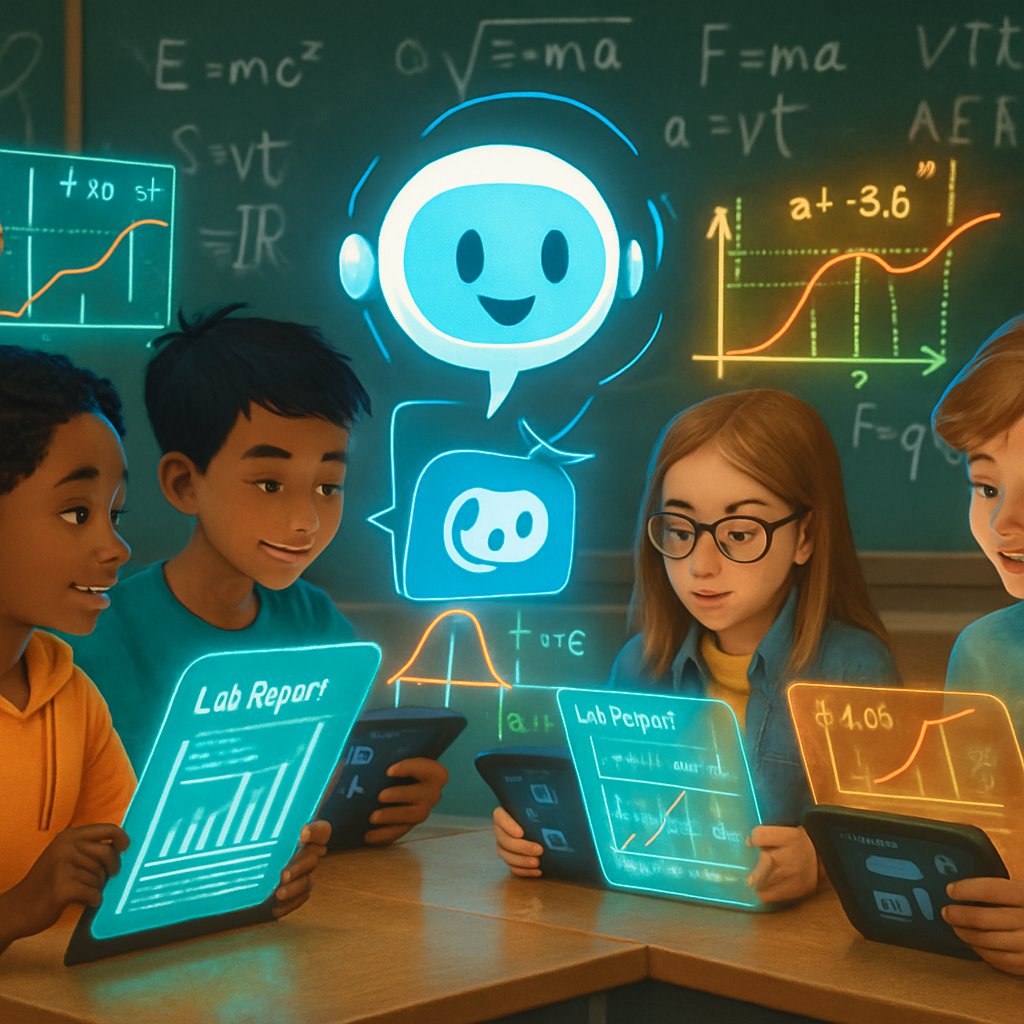Tapping into AI for Smarter Feedback in Physics Labs: A Close Look at ChatGPT
In the realm of education, the leap from traditional methods to tech-savvy solutions is always exciting—and sometimes a little daunting! One area that’s ripe for innovation? The way we assess laboratory reports in experimental physics. Imagine harnessing the power of AI, particularly tools like ChatGPT, to provide feedback that’s not just quick but also meaningful. Does it sound too good to be true? Well, a recent study explores this very question, shedding light on how generative AI can revolutionize feedback in physics labs.
The Spark of Innovation: AI Meets Physics Education
Generative AI is like that bright student in class who seems to get everything right (well, most of the time). With models like ChatGPT, educators are experimenting with its potential to streamline assessments, especially in complex subjects like physics. But while we’ve seen plenty of promise, the road to integrating AI in the classroom is filled with bumps and potholes.
The study at hand takes a deep dive into how ChatGPT can help evaluate laboratory reports in experimental physics. It investigates two interaction modes: one where evaluations are done automatically via an API and another that mimics instructor feedback. Intrigued? Let’s break it down.
Breaking It Down: How This All Works
What’s the Big Deal About Lab Reports?
Laboratory reports aren't just busywork; they are crucial tools that help students engage with scientific practices. These reports integrate writing, math, and experimental data, making them a goldmine for understanding a student’s performance. However, evaluating them can be a real chore, especially in large classes where consistency is key.
The AI Assessment Protocol: How It Works
The researchers set out to explore how well ChatGPT could grade lab reports by implementing a structured protocol. They designed a detailed evaluation guide that focused on two key dimensions:
Formal and Structural Integrity: This looks at how well the report adheres to scientific conventions. Is it organized correctly? Does it flow logically?
Technical Accuracy and Conceptual Depth: This part digs into the nitty-gritty of calculations and data interpretation. Does the student grasp the physics concepts behind their findings?
The team then compared the performance of ChatGPT in two scenarios: a manual interaction, where researchers instructed the model like a professor, and an automated evaluation, where the model received batch reports through an API.
The Results Are In: What Did the Study Find?
It turns out that ChatGPT has its strengths and weaknesses:
Strengths in Structure
When it comes to assessing things like clarity and organization, ChatGPT shines. The AI recognized well-formed titles, coherent objectives, and proper formatting. Imagine a helpful teacher saying, “Your methodology is clear, and I love how you’ve presented your data!”
Stumbling Blocks in Technical Evaluation
However, the AI didn’t fare as well with complex technical details. For instance, it pointed out errors in mathematical notation but sometimes misidentified correct expressions as mistakes. It also struggled with interpreting graphs and tables, leading to inaccurate feedback. The important takeaway? While ChatGPT can consistently critique the structure of lab reports, it falters on the intricate science behind those reports.
Teacher Supervision: The Safety Net for AI Feedback
One crucial aspect highlighted by this study is the need for teacher supervision. While AI can provide valuable feedback, it should work as a supplement—never a replacement—for human judgment. After all, there’s a certain nuance to evaluating scientific reasoning that AI might not grasp fully.
Real-World Implications: What This Means for Physics Education
So, what does this mean for teachers and students? Integrating AI into the evaluation process might make grading less of a burden on instructors, helping them to focus more on individualized feedback and instruction. Plus, it opens up new ways to track a student’s progress over time, facilitating meaningful conversations about growth and understanding.
But remember: AI isn't perfect. It may excel at spotting structural errors but shouldn't be solely relied upon for deeper insights into a student's conceptual grasp. Think of AI as a cool assistant—you wouldn’t let them run the whole show, but they can definitely help lighten the load.
Key Takeaways
AI’s Role in Education: Generative AI tools like ChatGPT show a promising potential for improving the feedback process in physics, especially regarding structure and clarity.
Strength vs. Weakness: While AI can effectively assess the formal aspects of lab reports, it's less reliable in evaluating technical accuracy and conceptual understanding due to limitations in processing complex information.
Teacher Guidance is Essential: Human oversight is crucial to ensure that evaluations are valid and that students receive accurate feedback on their scientific reasoning.
Growth Opportunities: AI can help identify common areas where students struggle, paving the way for targeted instruction and improved learning outcomes.
Future Directions: More research is needed to fine-tune AI assessment tools to enhance their reliability and effectiveness in educational contexts.
This study is only the tip of the iceberg in our understanding of AI's role in education. It highlights both potential and limitations, urging us to navigate this new landscape thoughtfully. As AI continues to evolve, one thing is clear: it could change the way we teach and learn in classrooms around the world!
So, whether you’re a teacher looking to enhance your evaluations or a student eager to understand the intricacies of scientific feedback, keep an eye on the developments in AI. The future is looking bright!

